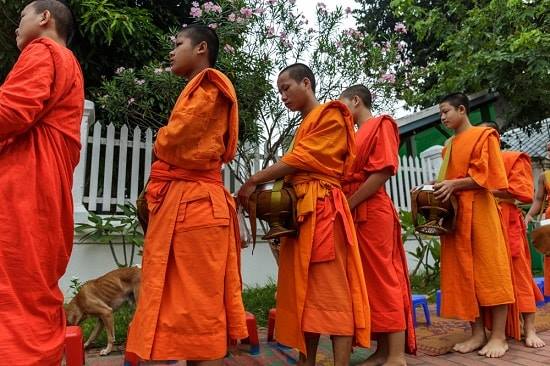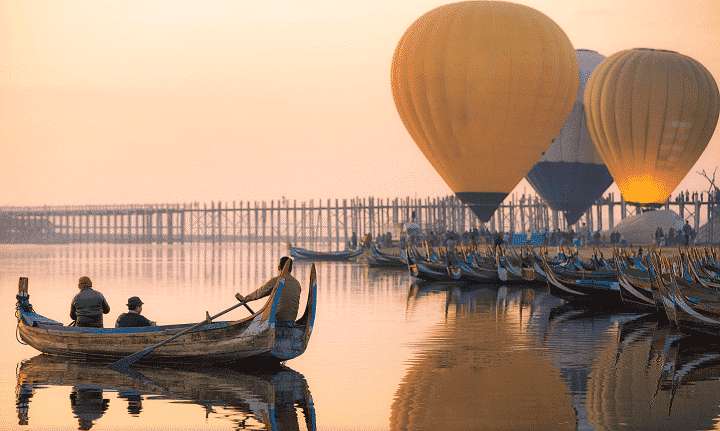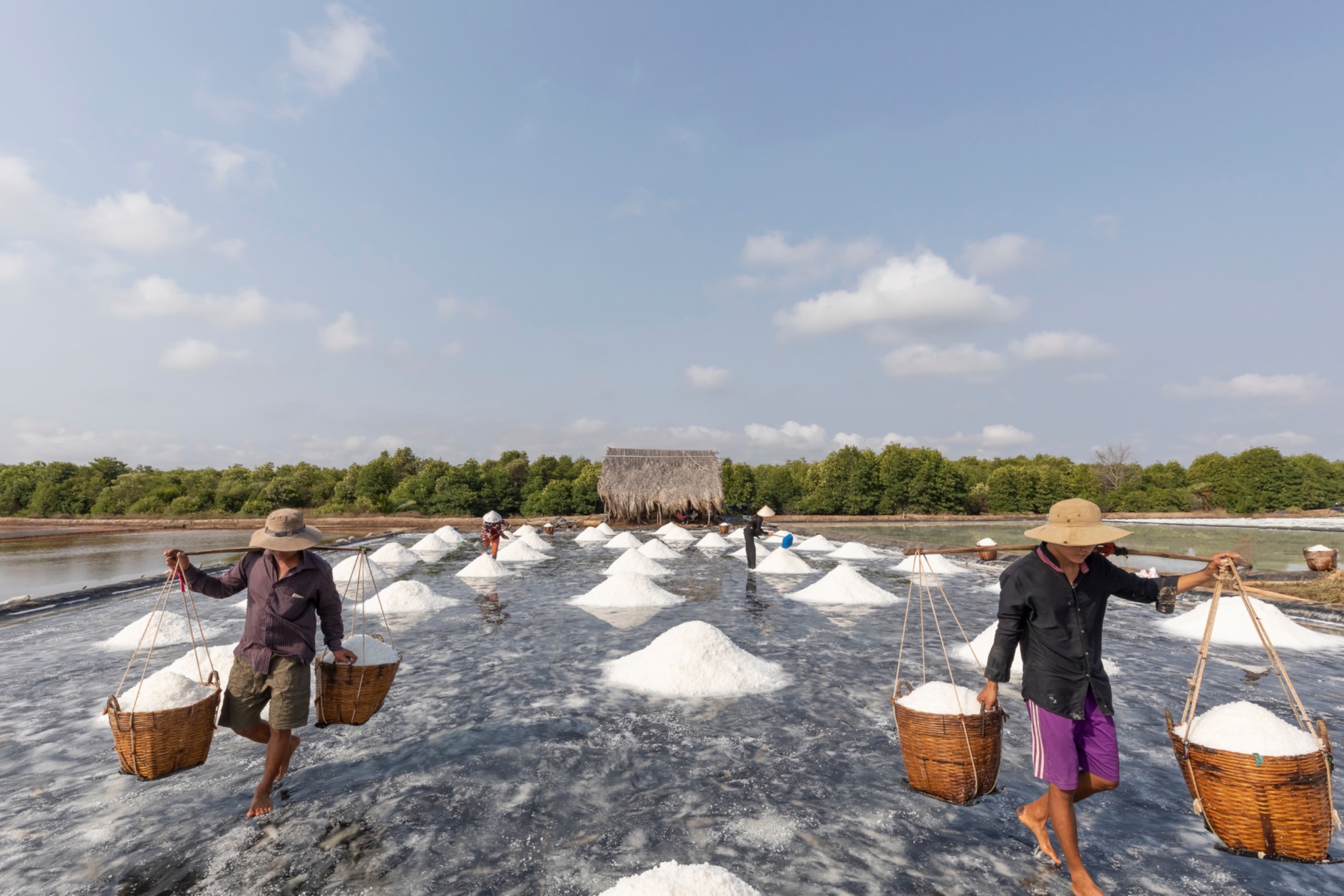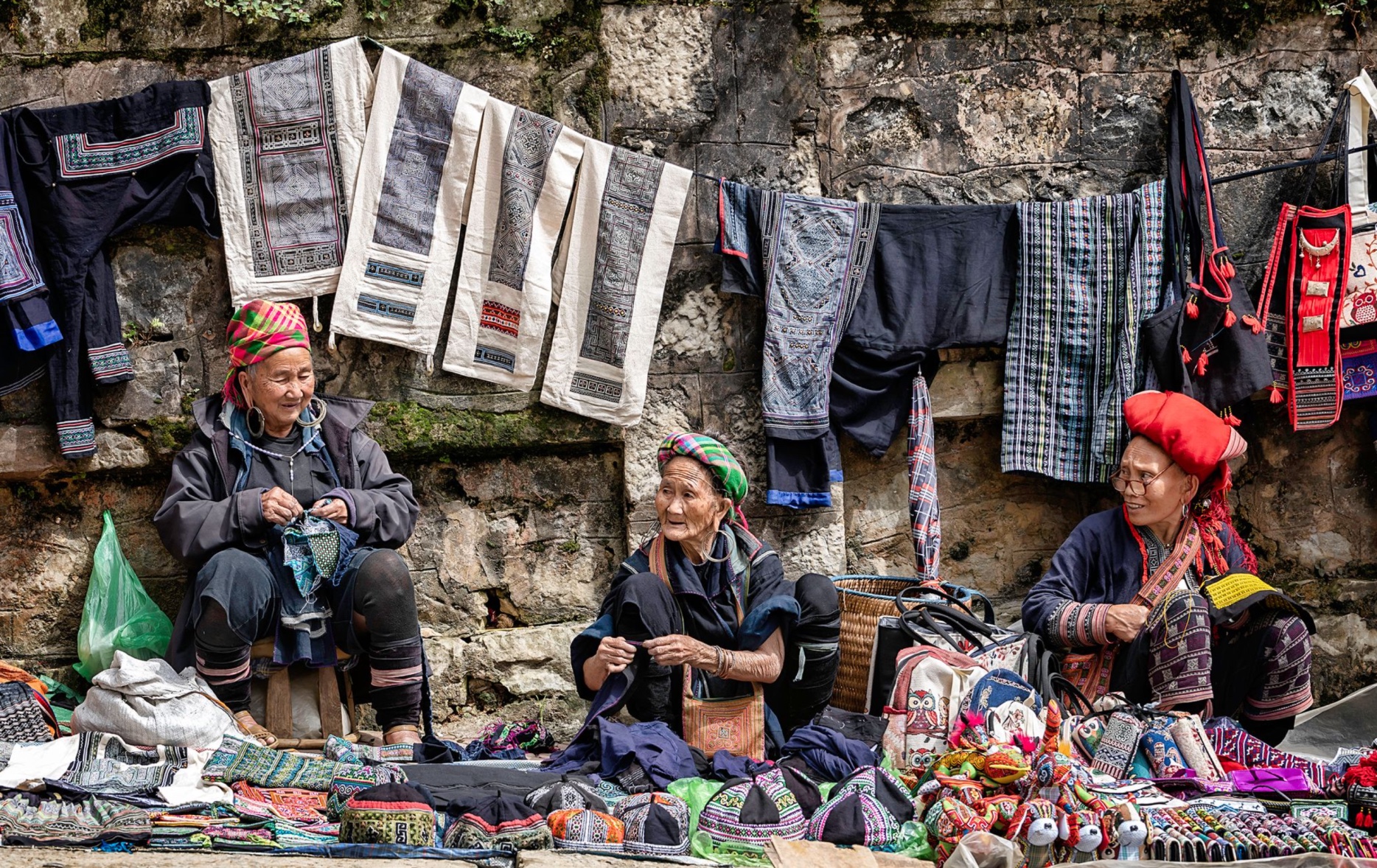VIETNAMESE CULTURE
Vietnamese culture, a fusion of ancient traditions and modern influences, boasts a plethora of elements that captivate the modern life of the Vietnamese people. Culture of Vietnam shows a reflection in everyday’s life or its people from the delectable cuisine to the intricate rituals, every aspect reflects the essence of a nation that has gracefully preserved its identity over centuries. Understanding the culture, traditions and daily life of the people of Vietnam is crucial to ensure that the diverse facets of Vietnamese culture are easily accessible to a global audience.
Vietnamese culture and traditions are rich into ethnicity woven with a deep history and diverse influences. Rooted in Confucianism, Buddhism, and Taoism, it emphasizes respect for family, elders, and communal harmony. Vietnamese people are known for their warmth, deep smile and their hospitality, and strong sense of community. Traditional values are reflected in vibrant celebrations, intricate art forms, and a unique cuisine renowned for its flavors and freshness. Festivals like Tet Nguyen Dan (The Lunar New Year) showcase elaborate customs, while ao dai, the traditional attire, symbolizes elegance. Despite modernization, Vietnamese traditions endure, fostering a unique blend of ancient heritage and contemporary dynamism, making Vietnam a captivating cultural mosaic
Introducing Traditions & Culture of Vietnamese People
Four great philosophies and religions have shaped the spiritual life of the Vietnamese people: Confucianism, Taoism, Buddhism and Christianity. Over the centuries, Confucianism, Taoism and Buddhism have melded with popular Chinese beliefs and ancient Vietnamese animism to form what is known as Tam Giao (or ‘Triple Religion’).
Vietnamese (kinh) is the official language of the country, although there are dialectic differences across Vietnam. There are dozens of different languages spoken by various ethnic minorities (54 of them) and Khmer and Loatian are spoken in some parts. The most widely spoken foreign languages in Vietnam are Chinese (Cantonese and Mandarin), English, French and Russian, more or less in that order.
Popular artistic forms include: Vietnamese traditional painting produced on frame-mounted silk; an eclectic array of theatre, Vietnamese puppetry, music and dance; religious sculpture; lacquerware and ceramics.
Vietnamese cuisine is especially varied – there are said to be nearly 500 different traditional dishes that include exotic meats (but consider carefully before you eat a rare animal) and fantastic vegetarian creations (often prepared to replicate meat and fish dishes).
However, the staple of cuisine is plain white rice dressed up with a plethora of vegetables, fish or seafood in general (which is common in Vietnam), meat, spices and sauces. Spring rolls, noodles and steamed rice dumplings are popular snacks, and the ubiquitous soups include eel and vermicelli, shredded chicken and bitter soups. Vietnamese fruit is abundant; some of the more unusual ones include green dragon fruit, jujube, khaki, longan, mangosteen, pomelo, three-seed cherry and water apple. Vietnamese coffee (ca phe phin) is very good; it’s usually served very strong and very sweet.
Vietnamese ethnic minority cultures
The Vietnamese ethnic minority cultures boasts a rich array of cultures that reflect the people’s diverse traditions during the history. With roots dating back thousands of years, Vietnamese ethnic minority’s customs and traditions have been shaped by influences from China, Southeast Asia, and beyond. The vibrant traditions includes unique art forms, traditional music, and dance, often intertwined with agricultural practices and folklore. The Vietnamese people celebrate Tet, their Lunar New Year, with elaborate rituals and feasts. Cuisine plays a central role in ethnic groups culture, with iconic dishes that showcasing their culinary finesse.
Culture of Ancestor worship vietnam
Culture of worshiping ancestor in Vietnam holds profound significance in life of the Vietnamese people, reflecting the country’s deep-rooted cultural and spiritual values. Embedded in Confucianism, Taoism, and Buddhism, this ancient tradition venerates ancestors as revered guardians and sources of guidance. Families maintain ancestral altars adorned with offerings, symbolizing gratitude and respect. Rituals, such as the Tet holiday, emphasize filial piety, with families paying homage to departed relatives. The practice fosters a strong sense of continuity, connecting past and present generations. Ancestor worship not only honors forebears but also reinforces the importance of familial ties in Vietnamese culture, contributing to the cohesive social fabric and the preservation of Vietnam’s rich cultural heritage.
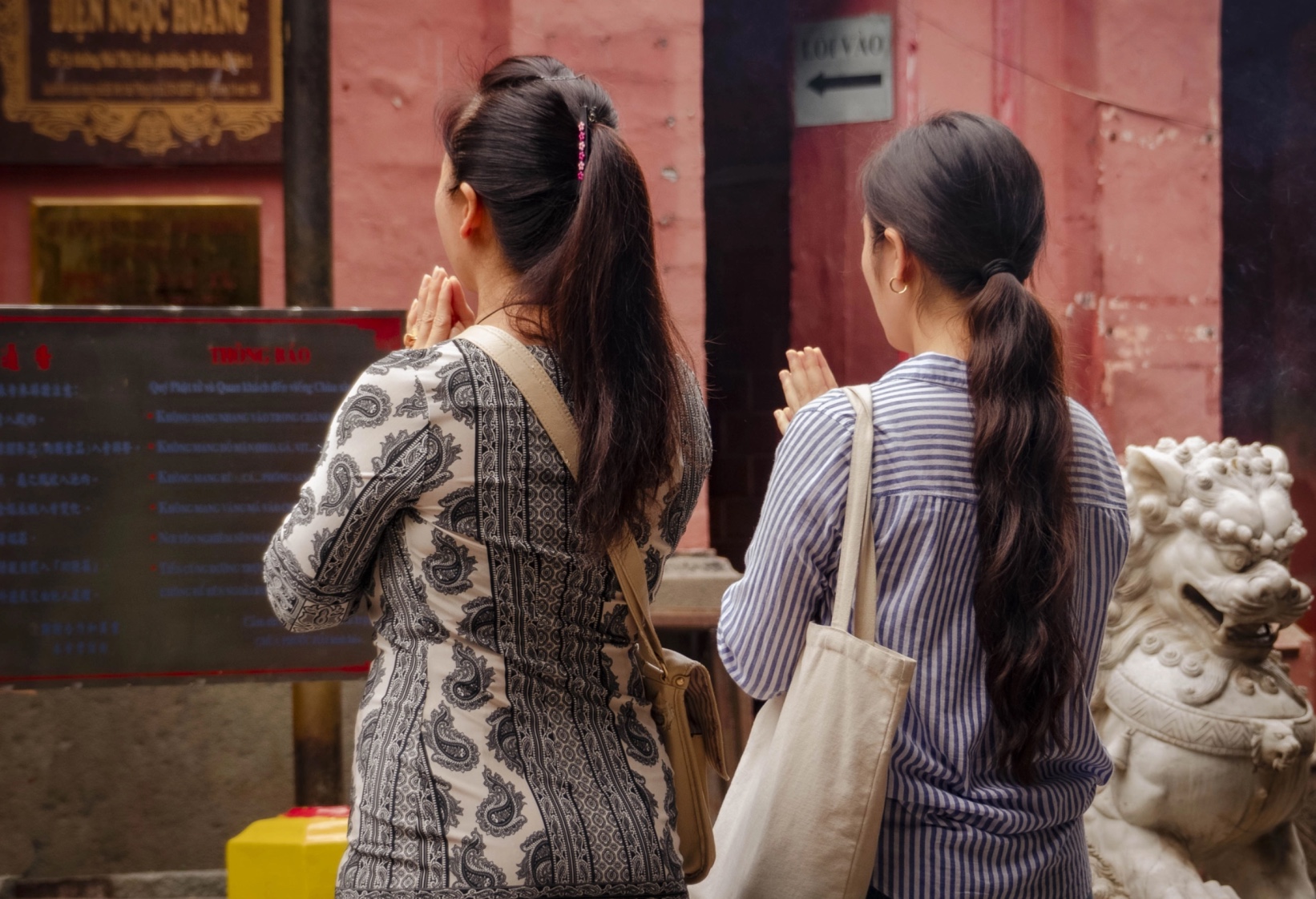
Tet: Vietnamese Lunar New Year
Tet, the Vietnamese Lunar New Year, is a culture yet vibrant and significant celebration that marks the arrival of spring and symbolizes renewal. Families unite to honor ancestors, clean homes, and indulge in festive meals. The air is filled with the aroma of traditional dishes like banh chung and gio lua. Streets burst with colorful decorations, vibrant flower markets, and lively parades. A central tradition involves giving and receiving “li xi” or lucky money in red envelopes, fostering prosperity. Fireworks illuminate the night sky, and dragon dances mesmerize crowds. Tet in Vietnam, embodies rich cultural rituals, emphasizing the importance of family bonds, reflection, and the hope for a prosperous year ahead in Vietnam’s cultural tapestry.
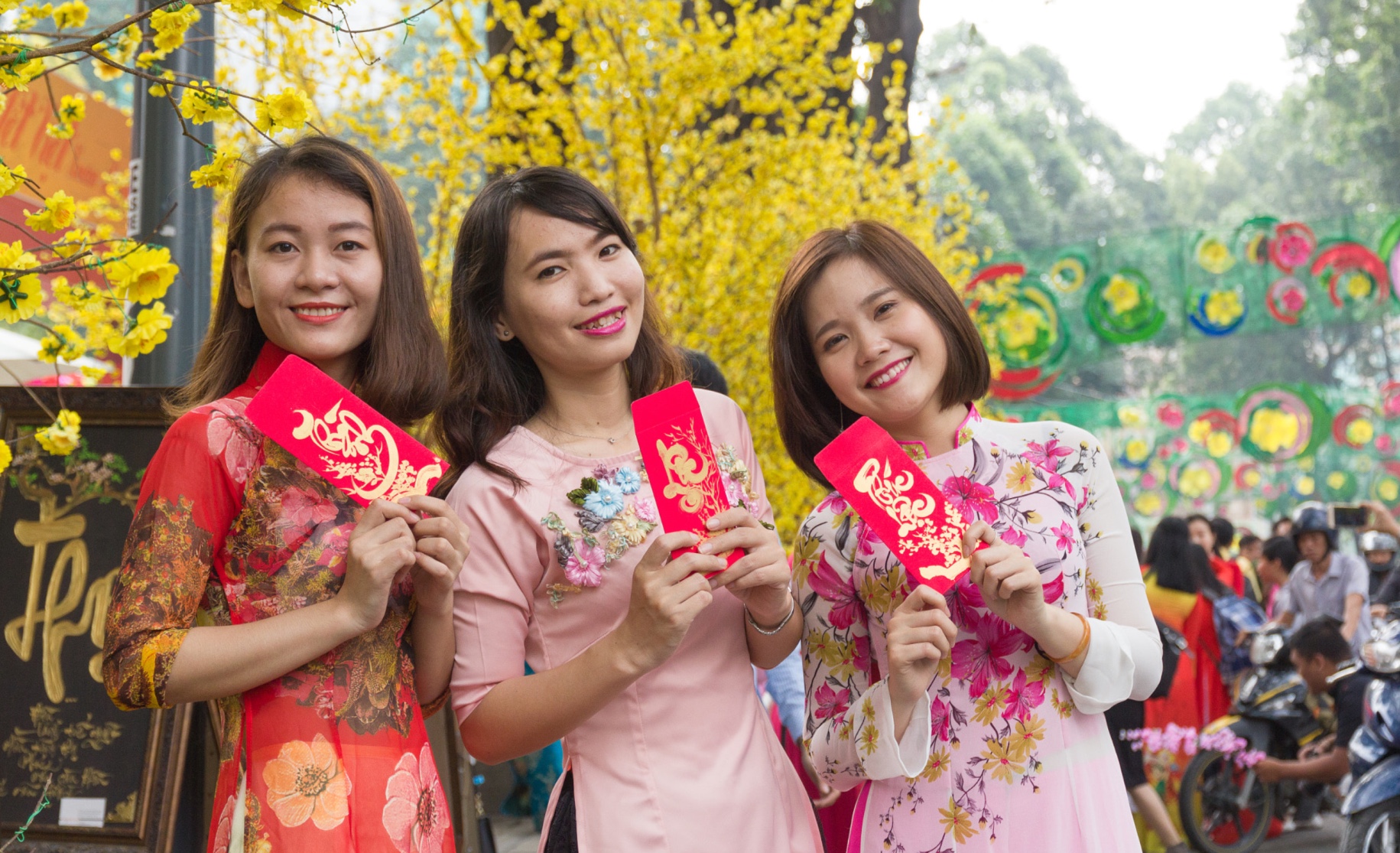
Cuisine and Culinary culture of Vietnam
Vietnamese cuisine culture is inspired from vibrant worlds of Asian flavors, blending a rich culinary heritage with diverse regional influences. Characterized by its balance of five fundamental tastes—spicy, sour, bitter, salty, and sweet—Vietnamese dishes are a symphony of fresh herbs, aromatic spices, and delicate textures. Pho, a noodle soup, and Banh Mi, a savory bread sandwich, are iconic staples enjoyed worldwide. The cuisine places a strong emphasis on rice, accompanied by an array of fresh vegetables and herbs, creating a harmonious blend of textures and tastes. Seafood plays a prominent role in coastal areas, while the use of nuoc mam (fish sauce) adds a distinctive umami depth. Vietnam’s culinary artistry reflects a cultural mosaic, inviting culinary enthusiasts to savor its exquisite and diverse flavors. Learn more about Vietnamese Food →
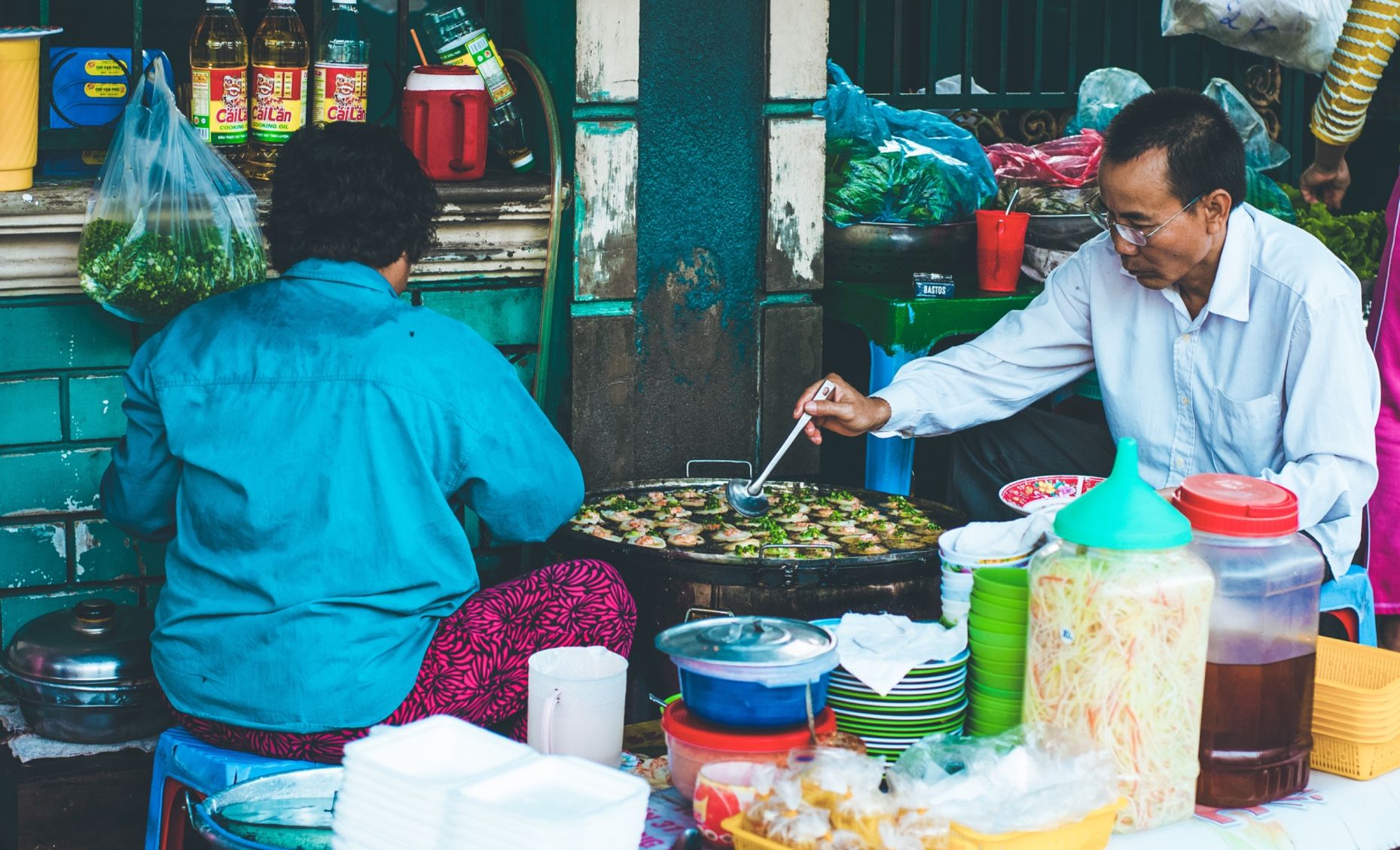
Traditional Arts & Crafts of Vietnam
Vietnam’s traditional arts and crafts reflect the nation’s rich cultural diversity, rooted in a history that spans centuries. Renowned for its diversity and intricate craftsmanship, Vietnamese traditional arts encompass a wide range of cultural disciplines, including lacquerware, silk painting, water puppetry, and ceramics. These crafts often bear symbolic significance, with motifs inspired by nature, folklore, and daily life. The meticulous techniques passed down through generations highlight the deep connection between artistry and heritage. Hanoi’s Old Quarter and Hue’s Imperial City stand as living testaments to this cultural legacy, where artisans continue to create timeless masterpieces. Vietnam’s traditional arts not only serve as a source of national pride but also contribute to the country’s allure as a vibrant cultural destination.
Vietnamese Traditional Clothing
Traditional Vietnamese clothing reflects the rich cultural diversity showcasing a harmonious blend of history, aesthetics, and functionality. Ao Dai, the traditional Vietnamese cloth for females, is a long, flowing tunic worn over wide-legged pants, symbolizing grace and modesty. The garment’s vibrant colors and intricate designs often signify different occasions and social statuses. Non la, the conical hat adorned with delicate patterns, provides both protection from the sun and a distinct touch of elegance. Beyond its aesthetic appeal, traditional Vietnamese clothing culture serves as a tangible link to the nation’s past, embodying a sense of identity and pride. In contemporary Vietnam, these timeless garments continue to be embraced during special events, cultural celebrations, and even as everyday wear, preserving the country’s sartorial heritage.
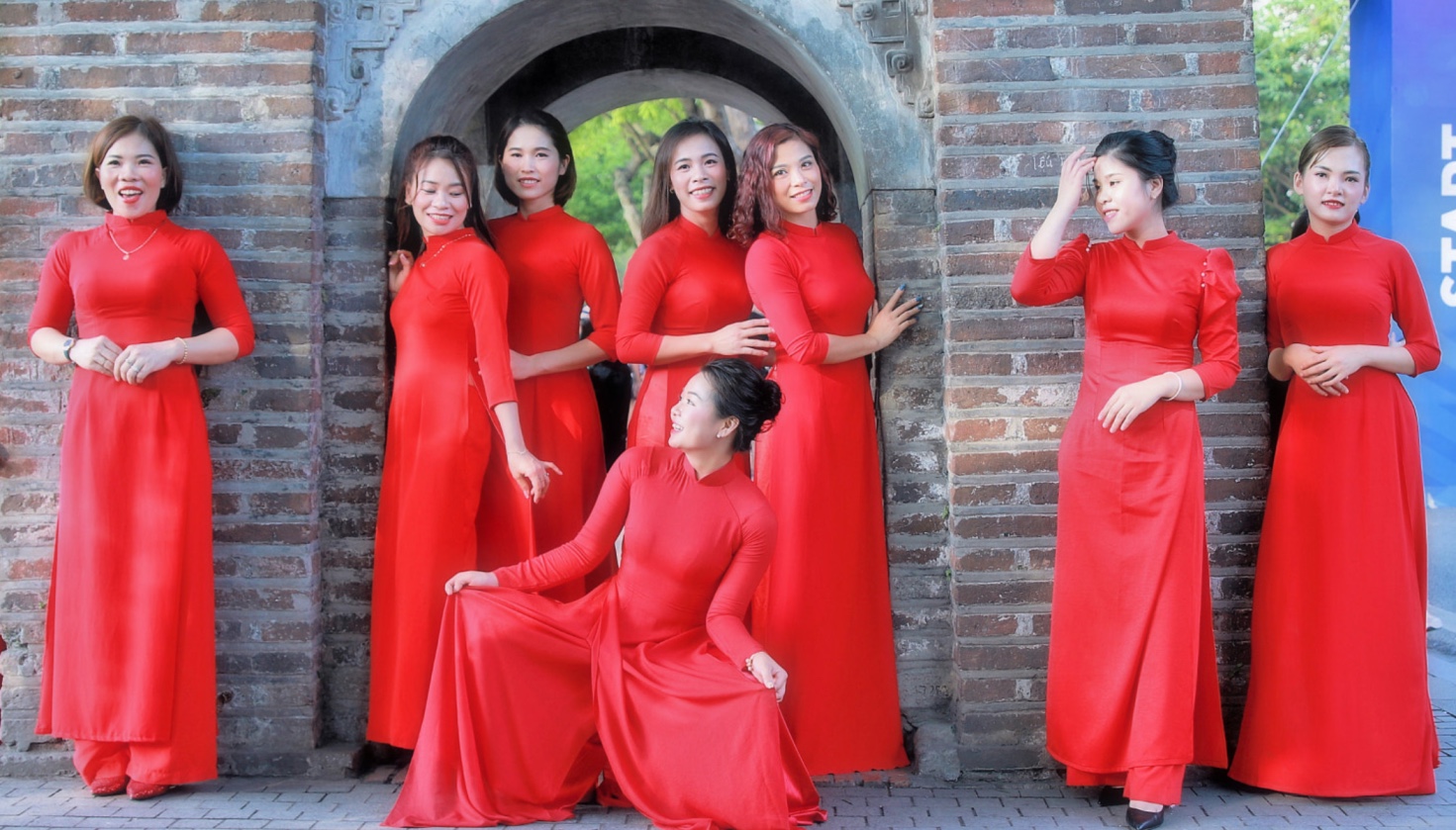
Vietnamese Literature, Folklore & Language
Vietnamese literature, folklore, and language reflect the nation’s diverse culture & heritage and tumultuous history. Rooted in a unique blend of indigenous traditions and influences from Chinese, French, and other Southeast Asian cultures, Vietnamese literature spans centuries, encompassing both classical and modern works. Folklore, with its myths, legends, and oral traditions, weaves a vivid narrative of the people’s beliefs and values, often portraying the resilience and spirit of the Vietnamese.
The Vietnamese language, a tonal one with a complex system of diacritics, adds a distinct musicality to communication. Its evolution mirrors the country’s struggle for independence and identity. From ancient literary classics like “The Tale of Kieu” to contemporary novels addressing social issues, Vietnamese literature continues to evolve, capturing the essence of the nation’s soul. Together, literature, folklore, and language serve as a powerful testament to Vietnam’s cultural vibrancy and its enduring ability to adapt and thrive in a changing world.

Historic Architecture & Heritage Monumnets of Vietnam
Vietnam boasts a rich series of architecture and heritage sites that reflect its diverse history and cultural influences. From ancient temples and pagodas to French colonial buildings, the country’s architectural landscape tells a compelling story of its past. The UNESCO World Heritage Site of Hoi An Ancient Town stands as a well-preserved example of a Southeast Asian trading port from the 15th to the 19th century, showcasing a fusion of local and foreign architectural styles.
The Imperial City of Hue, with its citadel and royal tombs, offers a glimpse into Vietnam’s imperial history. Ha Long Bay, another UNESCO site, features a breathtaking seascape adorned with traditional wooden junks and floating fishing villages. Modern Vietnamese architecture, exemplified by landmarks like the Bitexco Financial Tower in Ho Chi Minh City, represents the nation’s forward-looking spirit. Together, these architectural wonders form a testament to Vietnam’s cultural richness and resilience, attracting visitors from around the world to explore its captivating heritage.
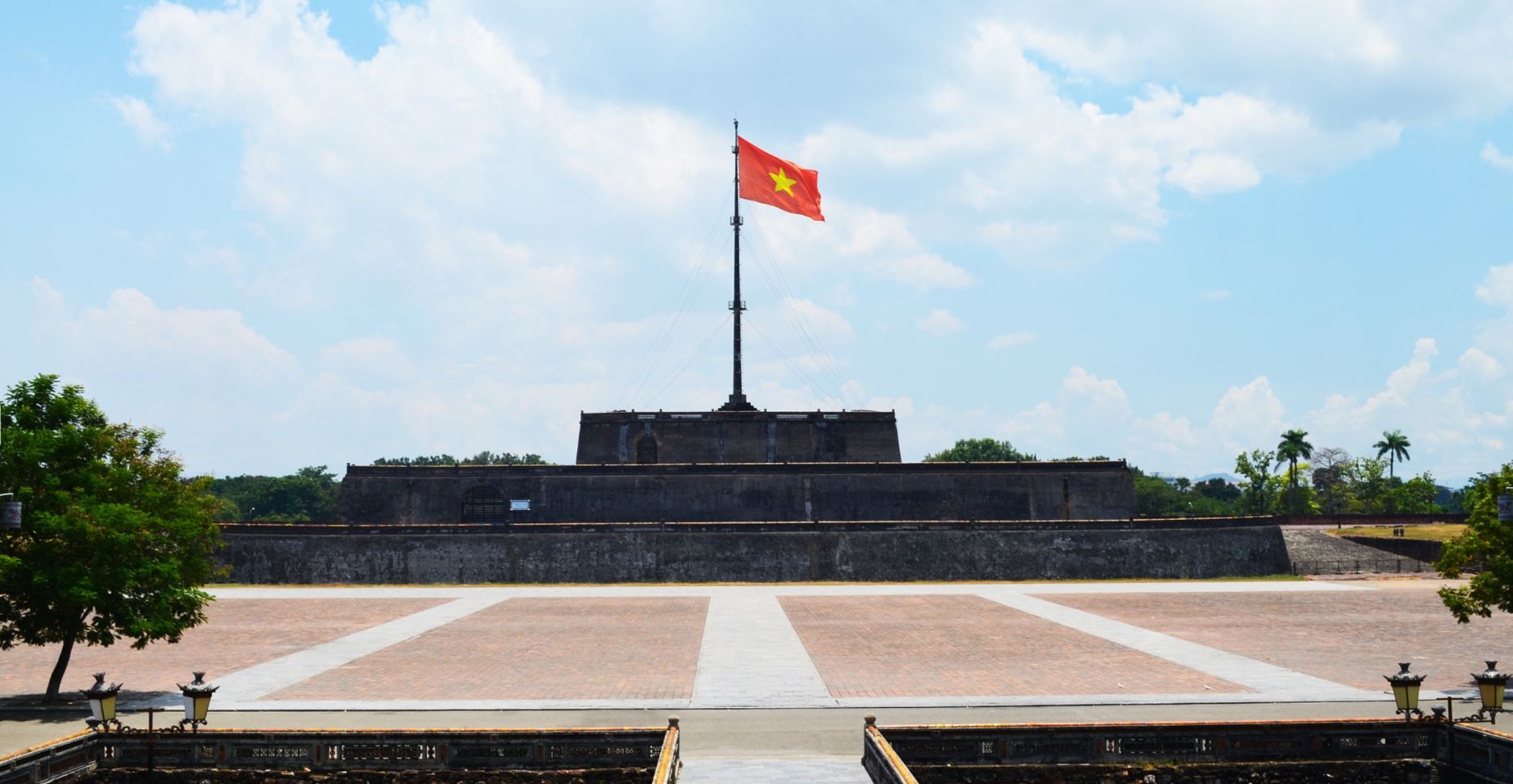
Modern Vietnamese Culture – Core Concepts
Modern Vietnamese culture is seamlessly weaves traditional elements with contemporary influences. Embracing rapid economic development and global connectivity, Vietnam has preserved its rich heritage while evolving dynamically. The fusion of ancient customs, diverse ethnic traditions, and global trends is evident in art, fashion, and cuisine. Vietnamese youth express their identity through a unique blend of traditional ao dai attire and modern street style. The country’s film industry, fashion, music, and literature reflect a nuanced narrative, capturing both historical struggles and aspirations for the future. With a tech-savvy population, social media plays a pivotal role in shaping and disseminating this cultural amalgamation, creating a fascinating mosaic that resonates globally.
Vietnamese Sports & Recreation Culture
Vietnamese sport culture is part of nation’s ettiquette which has been passed on from generation to generation. Martial arts, especially Vovinam (Việt Võ Đạo) and traditional wrestling, are deeply ingrained in the cultural fabric, showcasing discipline and physical prowess. Football holds a special place in the hearts of millions, fostering unity and excitement during international competitions. Dragon boat racing, an ancient water sport, exemplifies teamwork and endurance, often celebrated during festivals. Additionally, sepak takraw, a unique blend of soccer and volleyball, highlights agility and skill. Beyond competitive sports, communal exercises like Tai Chi and traditional dance underscore the importance of holistic well-being, seamlessly weaving athleticism into Vietnam’s vibrant cultural identity.
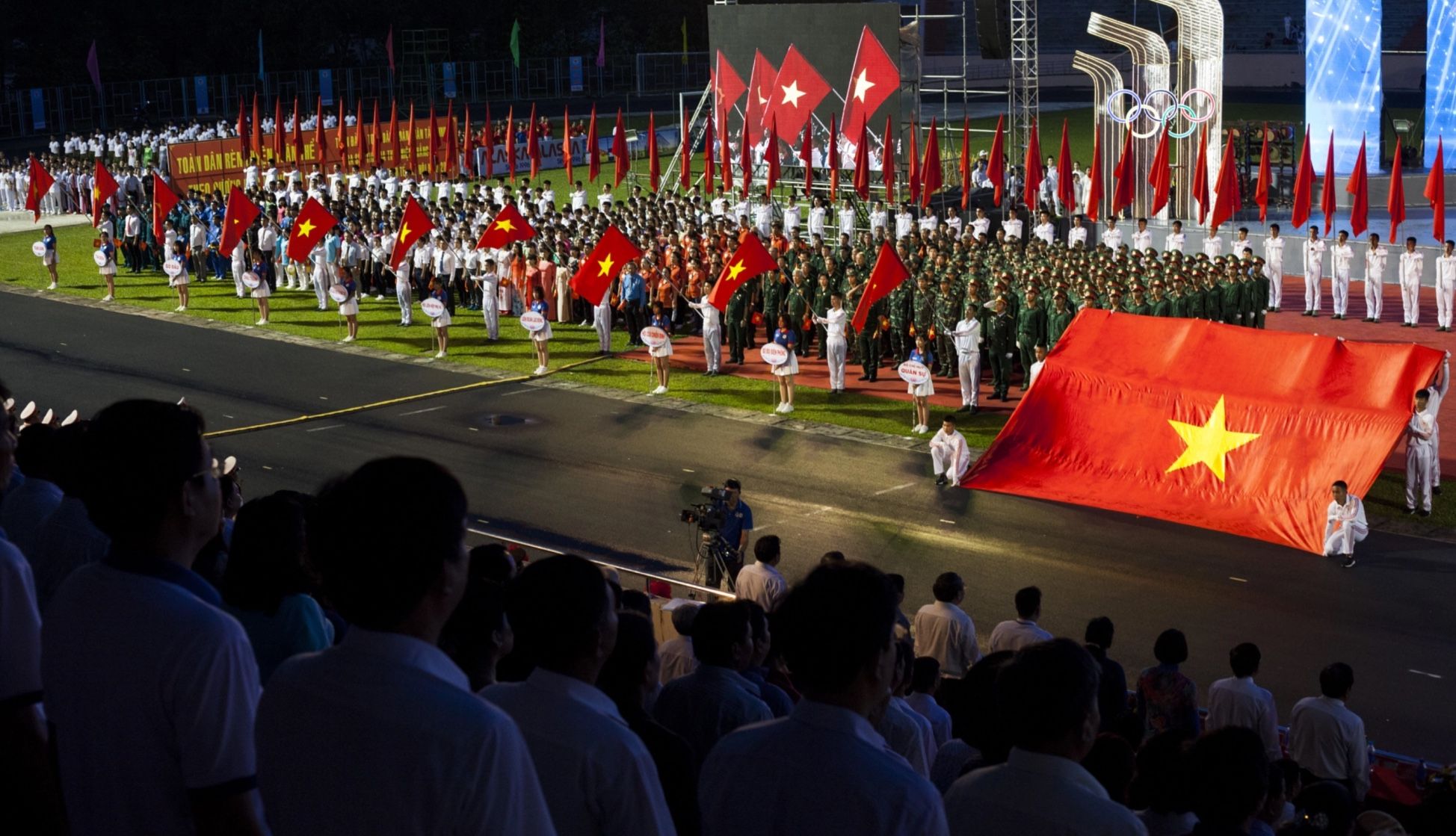
Communal Dining in Vietnamese culture
In Vietnam, communal dining is an integral part of culture, embodying the boost in spirit of togetherness and hospitality. Shared meals, often featuring an array of vibrant dishes, bring colleagues, friends, and even strangers together in purpose of tying connections and building trust and business relationships. This, encourage senses of community. The practice emphasizes the importance of collective enjoyment, fostering bonds and nurturing relationships. The communal dining experience transcends mere sustenance. It encapsulates Vietnam’s social fabric, where the act of sharing food becomes a celebration of unity, echoing the country’s warm and inclusive ethos.
Drinking Culture in Vietnam
Drinking beer or wife in Vietnam, the culture holds deep social significance, intertwining traditions with camaraderie. A ubiquitous sight is locals gathered around low tables, sharing stories over glasses of bia hoi (fresh beer) or rice wine. Drinking sessions often accompany celebrations, fostering community bonds. Respect is conveyed through the ritual of pouring drinks for others before oneself. A common phrase, “Mot, Hai, Ba, Dzo!” (One, two, three, cheers!), resonates in the vibrant atmosphere. However, moderation is paramount, as excessive drinking is frowned upon. This cultural practice reflects Vietnam’s collective spirit, emphasizing the importance of shared moments and interpersonal connections through the ritual of raising glasses in unison.
Vietnam’s Environment, Climates & Wildlife
Vietnam borders Cambodia, Laos and China and stretches over 1600km (1000mi) along the eastern coast of the Indochinese Peninsula. The country’s two main cultivated areas are the Red River Delta (15,000 sq km/5400 sq mi) in the north and the Mekong Delta (60,000 sq km/23,400 sq mi) in the south. Three-quarters of the country is mountainous and hilly; the highest peak, at 3143m (10,310ft), is Fansipan in the northwest, located in Sapa Vietnam
Vietnam is made up of equatorial lowlands, high, temperate plateaus and cooler mountainous areas. The country lies in the intertropical zone and local conditions vary from frosty winters in the far northern hills to the year-round subequatorial warmth of the Mekong Delta. At sea level, the mean annual temperature is about 27°C (80°F) in the south, falling to about 21°C (70°F) in the far north.
Best time to visit Vietnam → Monthly climate guide
Although Vietnam has diverse wildlife, it is in precipitous decline because of the destruction of habitats, illegal hunting and pollution. Fauna includes elephants, rhinoceros, tiger, leopard, black bear, snub-nosed monkey, crocodile and turtle. Less than 30% of the Vietnam remains forest-covered, and what remains is under threat from population pressure and the growth of industry. The situation has improved since 1992, following the banning of unprocessed timber exports, education programs or rural Vietnamese people and reforestation projects.

Pre-20th-Century History of Vietnam
Vietnamese People of the the sophisticated Bronze Age Dong Son culture emerged around the 3rd century BC. From the 1st to the 6th centuries AD, the south of what is now Vietnam was part of the Indianised Khmer kingdom of Funan, which produced fine art and architecture. The Hindu kingdom of Champa appeared around present-day Danang in the late 2nd century and had spread south to what is now Nha Trang by the 8th century. The kingdom existed in part through conducting raids in the region. The Chinese conquered the Red River Delta in the 2nd century and their 1000-year rule, marked by tenacious Vietnamese resistance and repeated rebellions, ended in AD 938 when Ngo Quyen vanquished the Chinese armies at the Bach Dang River.
During the next few centuries, Vietnam culture and traditions have been influenced, repulsed repeated invasions by China, and expanded its borders southwards from the Red River Delta, the kingdom of Champa was annexed in the 16th century and eventually the Vietnamese absorbed the Khmer territories of the Mekong Delta. In 1858, French and Spanish-led forces stormed Danang after several missionaries had been killed. A year later, Saigon was seized. By 1867, France had conquered all of southern Vietnam, which became the French colony of Cochinchina.
Modern History of Vietnam
Pro-independence forces, dominated largely by the leadership of Uncle Ho Chi Minh, resisted French domination during and after WWII. Ho Chi Minh’s declaration of Vietnamese independence in 1945 sparked violent confrontations with the French, culminating in the French military defeat at Dien Bien Phu in 1954.
The negotiation of the Geneva Accords of 1954 between the Vietnamese and the French temporarily divided the country into two zones (the Communists assumed control of the north and the anti-Communist, US-supported Ngo Dinh Diem took the south). Free elections were to have been held across the country in 1956, but Diem reneged on the plan – Uncle Ho Chi Minh seemed likely to win – and instead consolidated his own power in various ways, including fixing a referendum. Western powers embraced his government.
Political and ideological opposition quickly turned to armed struggle, prompting the USA (who’d been a covert presence since at least 1945) and other countries to commit combat troops in 1965. The Paris Peace Agreements, signed in 1973, provided an immediate cease-fire and the withdrawal of US troops – signalling a famous victory for Ho Chi Minh. Saigon eventually capitulated to the Communist forces on 30 April 1975.
Going straight from the fat into the frying pan, Vietnamese People had barely drawn breath from its war with America when it found itself at loggerheads with Khmer Rouge forces along the Cambodian borders. A protracted round of fighting eventually saw China enter the fray in support of Cambodia and the killings continued until the UN brokered a deal, with Vietnamese forces being pulled out of Cambodia in 1989. Although the Khmer Rouge continued to snipe from the borders, it was the first time since WWII that Vietnam was not officially at war with any other nation. The end of the Cold War and the collapse of the USSR in 1991 caused Vietnam and Western nations to seek rapprochement.
Recent History of Vietnam
Relations with the USA, have improved since early 1990’s. In 1994 the USA finally lifted its economic embargo, which had been in place since the 1960s. Bill Clinton became the first US president to visit Hanoi capital of Vietnam in 2000 and George W Bush followed suit in 2006, then Obama, Donald J. Trump, and Joe Biden in 2023, as Vietnam was welcomed into the World Trade Organization (WTO). Relations have also improved with the historic enemy China. Vietnam’s economic boom has caught Beijing’s attention long ago and it sees northern Vietnam as the fastest route from Yunnan and Sichuan to the South Sea.
Vietnam’s economy is growing at more than 6% in 2023 and tourists just can’t get enough of the this beautiful country. The future is bright, but ultimate success depends on how well the Vietnamese people can get into better development.
Planning a trip to Vietnam? Looking for tours beyond just Vietnam? · Amazing Vietnam Super Save Package In 10 Days · Vietnam Cambodia Highlights in 14 Days – Super Deal Packages, look no further → Best Vietnam Tours & Trips
Copyright 2013-2017 Vietnamese Private Tours Ltd With Vietnam Luxury Travel



